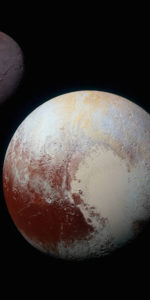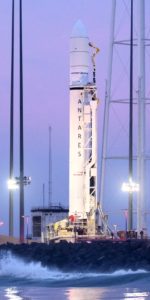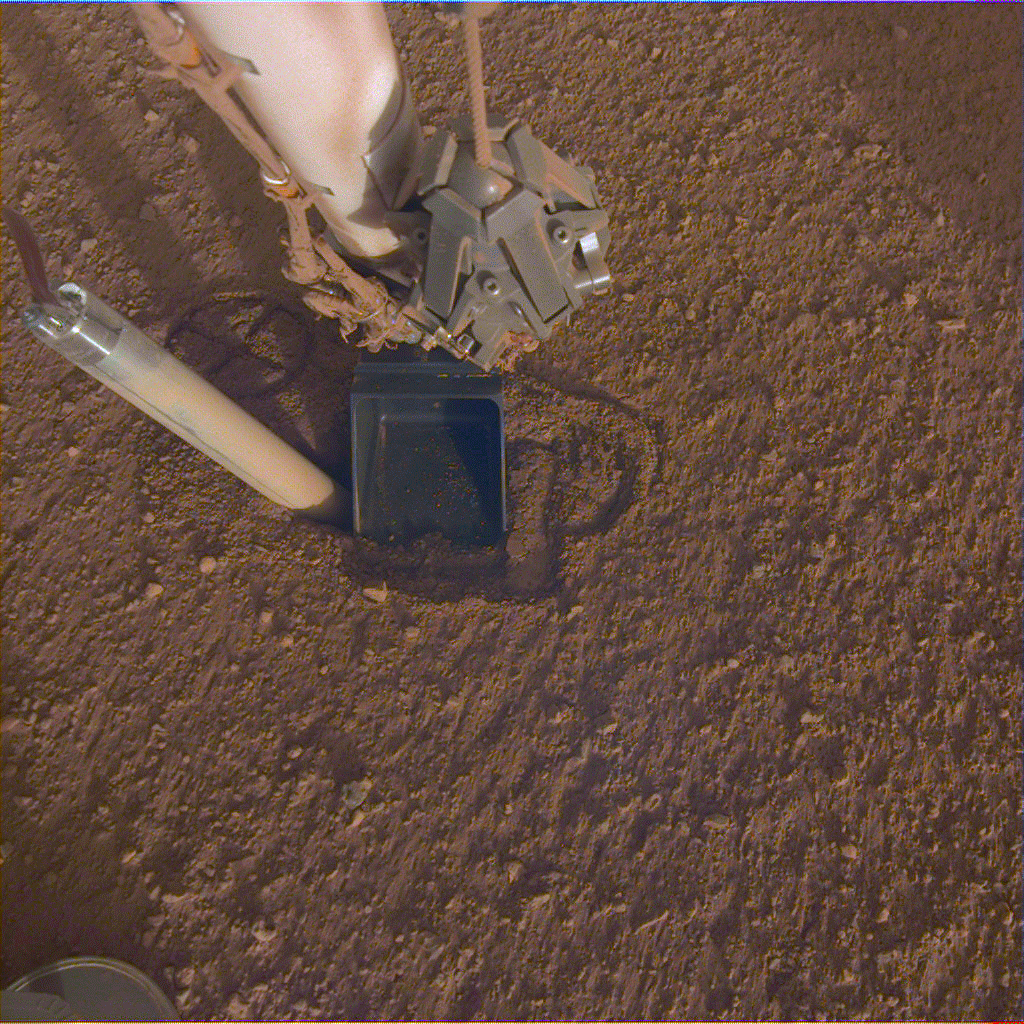
Update – Nov. 1, 2019: NASA InSight just tweeted that the mole appears to be stable and more images are being taken to try to solve the problem:
Original article:
Just as NASA’s InSight team was making progress fixing the lander’s heat probe – the “mole” – a new and potentially quite serious problem has presented itself. After some success in getting the mole to start digging deeper into the ground again, the instrument suddenly had other ideas. Surprisingly, it has now partially popped back out of its hole, about halfway out, actually.
Exactly why this happened isn’t clear yet, although the InSight team says it may have to do with unusual soil conditions. The team posted images of the mole on Twitter, now sticking halfway out of the ground:
One possibility is that soil is falling in front of the tip of the mole:
This is just the latest problem the InSight team has had with the mole, however. When it first started digging, it only got down about 14 inches (35 centimeters) before being “blocked.” The mole is designed to burrow down as much as 16 feet. It seemed like the mole had encountered cemented soil – duricrust.
The lander’s robotic arm recently was used to press the soil down around the probe to increase pressure and friction. It seemed to be working, as the mole made a bit more progress downward, about 2 centimeters (3/4 of an inch). Until it popped back out last Sunday.
“All we know about the soil is what we can see in images InSight sends us,” said Tilman Spohn, HP3’s principal investigator at DLR. “Since we can’t bring the soil to the mole, maybe we can bring the mole to the soil by pinning it in the hole.”
It is a frustrating development for the InSight team, but they are, of course, working on possible solutions.
“Every mission we’ve sent to the surface of Mars has encountered surprises and unexpected engineering challenges,” Kirsten Siebach, assistant professor and Martian geologist at Rice University, told Gizmodo in an email. “Challenges like this are disappointing and set back the research we had planned, but they frequently open new avenues for research and always teach us something new about the surface of Mars.”
In the meantime, InSight’s other instruments continue to perform as expected. The Seismic Experiment for Interior Structure (SEIS) has been busy monitoring marquakes and other activity below the surface.
The mission has otherwise been incredibly successful so far, with new findings about magnetism in the crust, marsquakes and even possible evidence for a vast amount of subsurface water.
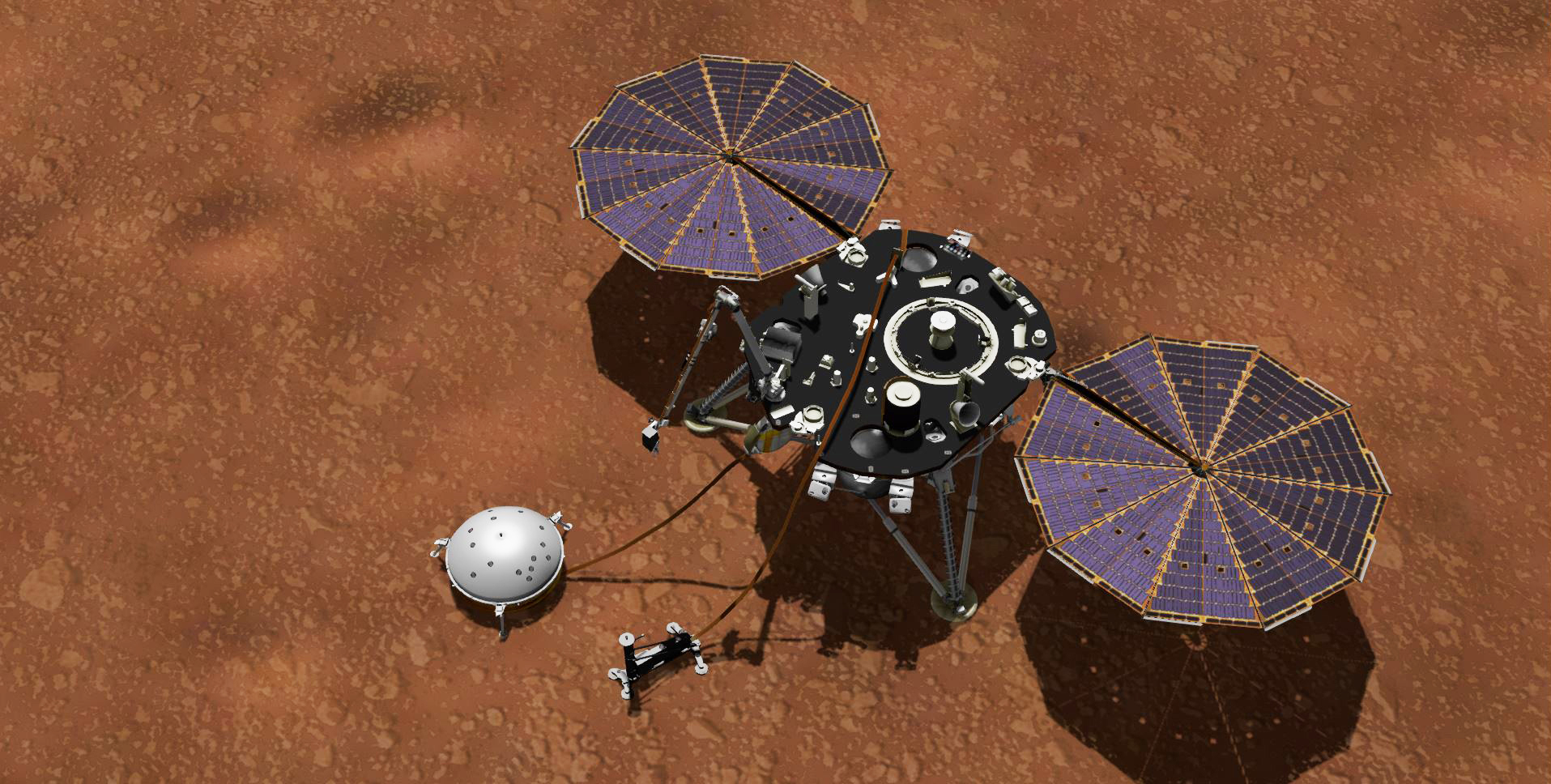
InSight found what appears to be an electrically conductive layer – as would be expected with water or water-rich soil – below the surface. It could be an aquifer or a water/ice layer that stretches around the planet. It isn’t known yet how deep it is, but scientists involved estimate a maximum of 62 miles.
It is already known that there is extensive subsurface ice on Mars, and last year it was announced that the Mars Express orbiter had found evidence of a subsurface lake near the south pole.
The presence of such underground lakes, and larger, global aquifers/groundwater (if confirmed) increase the chances of some kind of microbial life existing on Mars today.
It’s a very promising place to look for life on Mars,” said Roberto Orosei, a planetary scientist at the National Institute of Astrophysics in Bologna, Italy. “But we do not know for sure if it is inhabited.”
In Gale Crater, the Curiosity rover has been studying a slab of bedrock called “Old Soaker,” which shows evidence of once-wet mud that dried out about 3 billion years ago – an “ancient oasis” as the team referred to it. The finding also suggests that salty ponds were once common in Gale Crater. Earlier discoveries had showed that larger ancient lakes used to be present in Gale Crater, making it a habitable environment a few billion years ago.
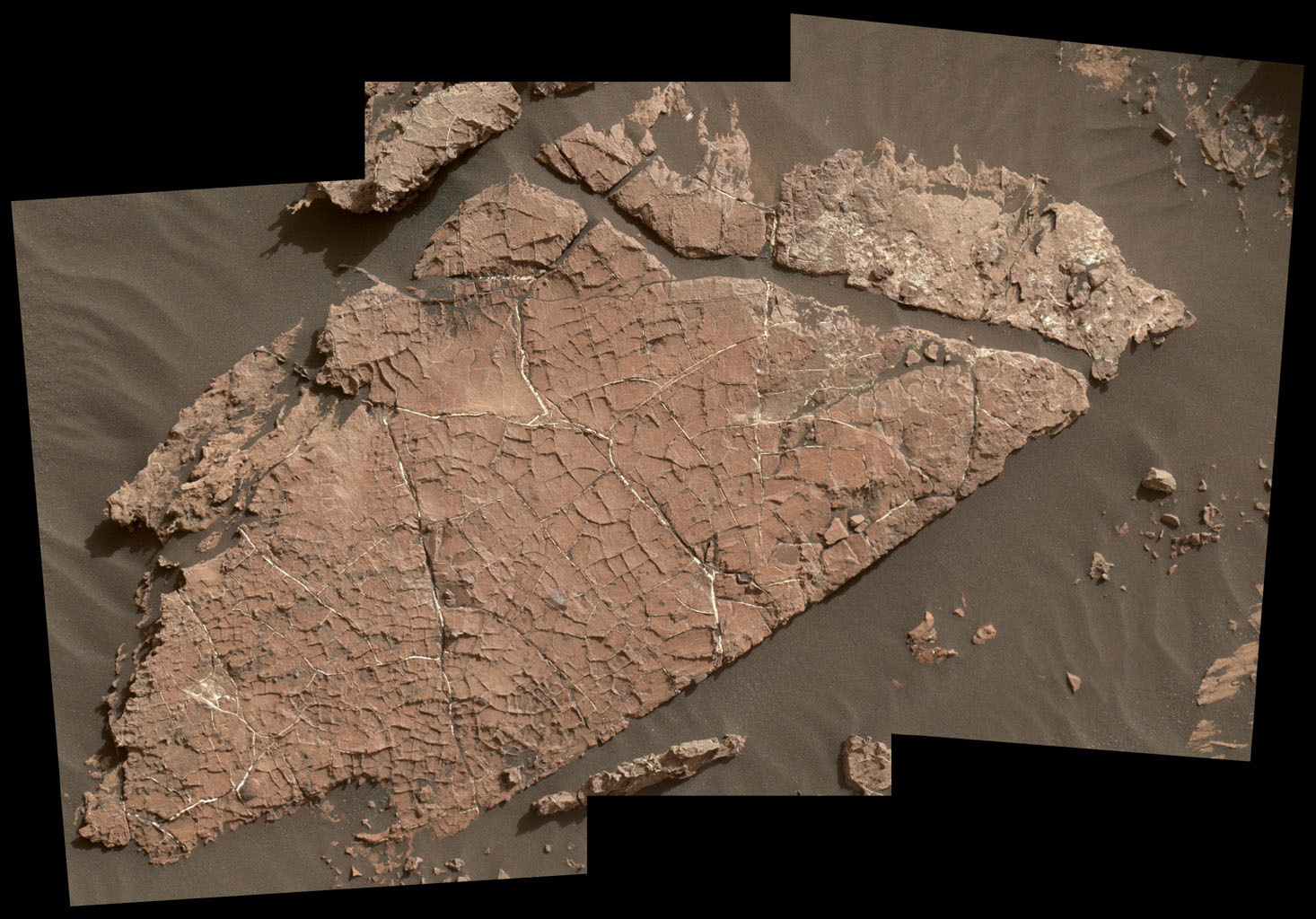
Curiosity has also, as expected, found ample clay minerals in this region on the lower slopes of Mt. Sharp, further evidence of past liquid water.
Everything is still progressing nicely for the Mars 2020 rover as well, scheduled to launch next year. Most recently, the rover just stood on its own legs and wheels for the first time during testing at the Simulator Building at JPL.
“After years of design, analysis and testing, it is fantastic to see the rover on her wheels for the first time,” said Ben Riggs, a mechanical systems engineer working on Mars 2020 at JPL. “The whole team looks forward to seeing her in the same configuration on Mars in the not too distant future.”
The rover will launch on a United Launch Alliance Atlas V rocket in July 2020 from Space Launch Complex 41 at Cape Canaveral Air Force Station. It will land on Mars on Feb. 18, 2021 in Jezero Crater. Its main mission is to search for evidence of past microbial life on Mars.
InSight was launched on May 5, 2018, on a United Launch Alliance Atlas V “401” rocket from Vandenberg AFB, California.
More information about InSight is available on the mission website.




